Bonfire Night in Britain – “Remember, remember the Fifth of November, The Gunpowder Treason and Plot” – is by far today’s biggest commemoration worldwide although this column’s main focus will fall on a more local anniversary as an Argentine publication. Yet Bonfire Night – also known as Fireworks Night or Guy Fawkes Night – marking the failure of the 1605 Catholic plot to blow up the Houses of Parliament (an early and extreme statement of anti-system politics) is not without its local connection since Maud Cox, the wife of the former Buenos Aires Herald editor Robert Cox who defended human rights in the period now highlighted by the film Argentina, 1985, numbers Guy Fawkes among her ancestors. There was earlier a persistent bid to depict him as a Spaniard Guido Vázquez who anglicised his name to Guy Fawkes but it was more the other way round with the Yorkshireman changing his name when serving in the Archduke Albrecht’s army striving to repress Protestantism in the Spanish Netherlands where the constant siege warfare gave him the skills to make him the explosives expert for Robert Catesby’s conspirators.
Anyway that’s probably enough about Guy Fawkes except perhaps to add the sardonic bid of Auberon Waugh (son of the author of Brideshead Revisited) to canonise him on the grounds that the dozens or hundreds of firework accidents in Britain every November 5 were miracles proving his sanctity.
So which is the local anniversary to be placed alongside Bonfire Night? Not so dramatic but arguably of far greater historic impact – the climax of the IV Summit of the Americas in Mar del Plata on November 5, 2005, a geopolitical watershed at both a hemispheric and national level.
At the continental level because from the very first Summit of the Americas in Miami in 1994 through to 2005 it was all plain sailing for the Washington Consensus and globalisation with Mar del Plata billed as putting the icing on the cake of the Free Trade Area of the Americas (FTAA) running from Alaska to Tierra del Fuego. But by 2005 South America’s mostly populist leadership had concluded: Who needs globalisation or a hemispheric free trade area with Chinese markets and the commodity price boom?
Rejection of the FTAA was spearheaded by Brazil’s Lula (who has returned to power as from last weekend) and the late Hugo Chávez of Venezuela, who insisted on organising and heading a counter-summit at the local 1978 World Cup stadium, attended by Diego Maradona among others. Summit host Néstor Kirchner enthusiastically supported all the pushback against the trade bloc promoted by his star guest, United States President George W. Bush, with the final declaration in favour of the FTAA simultaneously contradicting itself by including all the objections of Mercosur and Venezuela.
This represented a complete role reversal for Kirchner from the first half of his presidency when he was honoured with a White House visit in only his second month in office (July, 2003), to which he responded by warmly tapping Bush on the thigh and appealing to male bonding on the basis of both presidents being previously southern oil governors. Quite apart from this Washington jaunt, the first half of this Kirchner presidency was anything but Kirchnerite – the economic helmsman was Roberto Lavagna (dumped just three weeks after the Mar del Plata summit) while Kirchner’s first Justice minister was Gustavo Beliz, who helped to create Argentina’s most independent Supreme Court in decades. All as transparent as Patagonian ice at that stage.
That spring of 2005 saw a multiple shift of gears in the first complete term of this century. That year’s midterms were held on October 23 with Kirchner completing his emancipation from the 2002-2003 caretaker president Eduardo Duhalde who had reluctantly anointed him as his successor, a process personified by Kirchner’s wife Cristina besting Duhalde’s wife Hilda (or Chiche) in the Buenos Aires Province senatorial race. Then all links with Bush were rudely interrupted at the Mar del Plata Summit of the Americas (November 4-5). In the same month Lavagna was ousted on November 28 after hinting darkly at overpricing in public works. Only three days into 2006 Kirchner completed his declaration of independence by paying off Argentina’s debt of US$9.8 billion to the International Monetary Fund (IMF) in its entirety. All this in the space of 72 days or little over 10 weeks. There is thus a strong case for presenting that Summit of the Americas in Mar del Plata exactly 17 years ago today and the surrounding anniversaries as the true birth of Kirchnerism, not the presidential inauguration of May 25, 2003.
Today foreign policy continues to point in the direction into which it was tilted that spring even if the 2018 G20 summit hosted by Mauricio Macri (also in November albeit the last day of the month) sought to send out an entirely different message to the world. If Néstor Kirchner clinched his White House meeting in only his second month of presidency, Alberto Fernández has already had his postponed twice as he starts entering the final year of his term. That 2005 Summit of the Americas thus continues to stand as a historic watershed and perhaps the most memorable of what has declined into a protocol event imperfectly attended, even if memorable for the wrong reasons. A political bonfire and fireworks dated the Fifth of November, albeit not the real thing as on Guy Fawkes Night.
) A fireworks summit – the Summit of the Americas
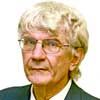



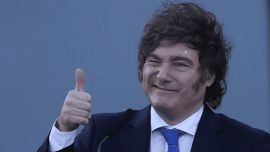








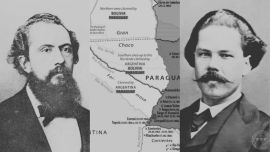

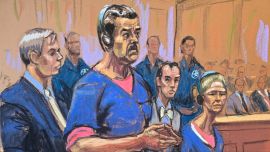

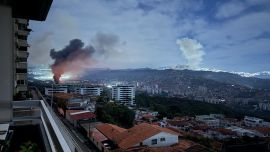
Comments